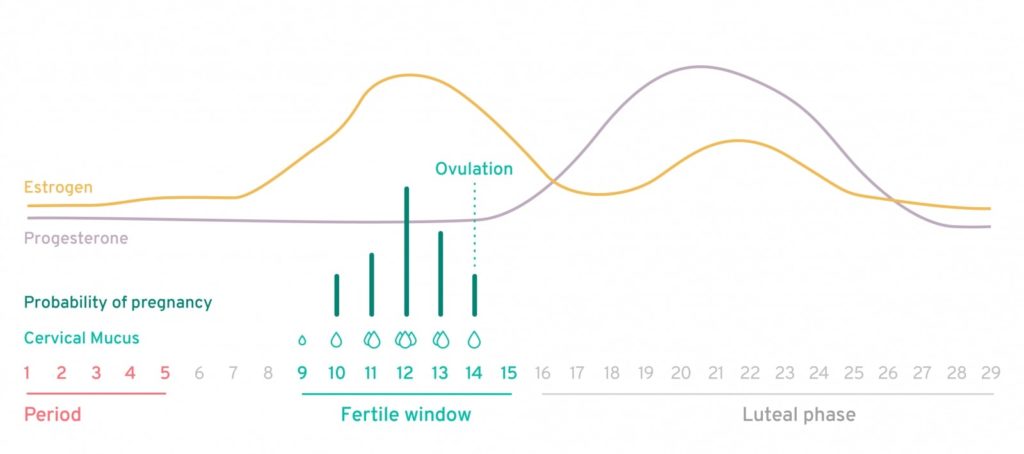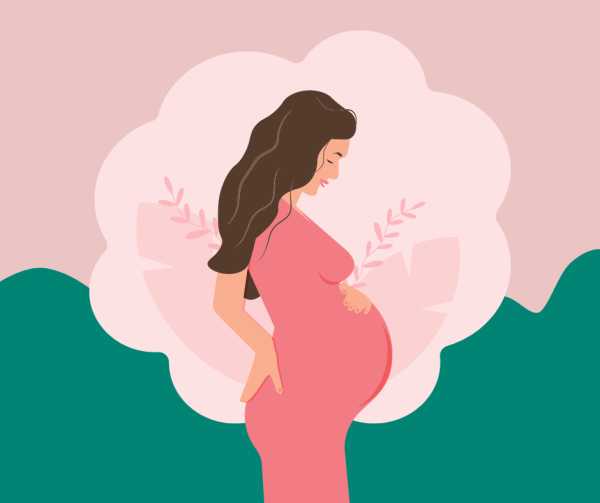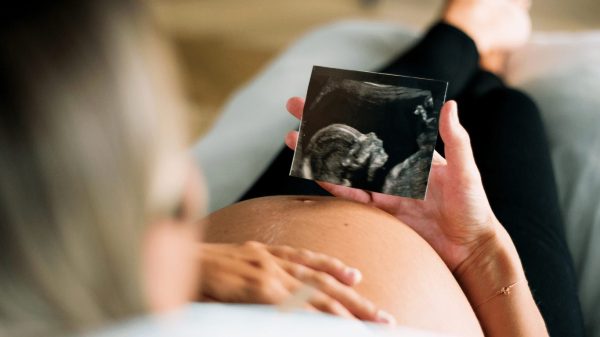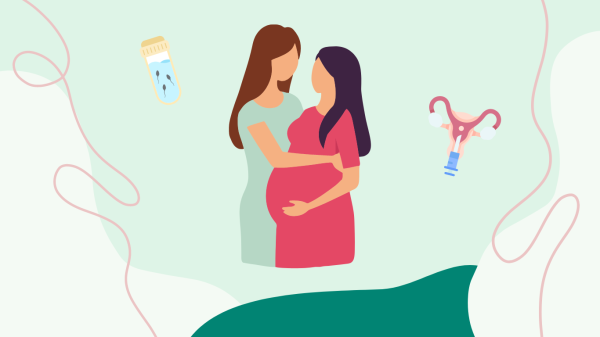For some, this is never an issue—they go on to conceive and carry easily and life goes on blissfully. But for others, unfortunately, that isn’t the case. And so a new kind of education begins.
When you begin the journey of trying to conceive (TTC) and find that it’s a little bumpier than expected (and not in a good way), it can be frustrating and confusing. Before TTC, we may believe we could fall pregnant easily at any time if we aren’t taking precautions to avoid conceiving. But after we begin TTC, it is a rude awakening to discover that the fertile window in each cycle is narrow and sometimes elusive.
Although that small window may leave you feeling helpless for the rest of your cycle, if you’re having difficulty conceiving, it may be reassuring to know that there are markers to look for all month long when it comes to understanding your reproductive health. Remaining attentive to these signs can help arm you with the information you need to better understand each phase of your cycle, make some lifestyle changes, or seek appropriate treatment from a medical professional who can help.
Read on for insights on how to spot and address some of the most common issues when it comes to conception, including timing intercourse, low progesterone, endometriosis, and polycystic ovarian syndrome (PCOS).
Flags in the Follicular Phase
The follicular phase is the first part of your cycle, in which follicles in the ovaries mature and prepare for ovulation. During this time, several hormones are at work in your body to help gear up for the big event: specifically, estrogen is encouraging your uterine lining to grow; follicle stimulating hormone (FSH) is encouraging your follicles to grow; and LH rises and then spikes to trigger a rupture of the dominant follicle and the release of the egg.

Menstruation is a part of this first half of your cycle. During your period—which should occur about every 21 to 35 days—your discomfort should be minimal and bleeding should be easily managed. Very irregular, painful, heavy, or other hormonal symptoms that interrupt your life (such as severe moodiness, weight fluctuation, or acne) can indicate a problem like PCOS or endometriosis.
The length of the overall follicular phase, including days of bleeding, varies for many women. It may also vary by a few days between cycles in the same woman. Generally speaking, though, you want to look for a follicular phase that lasts between 12 and 18 days. If it’s too short, your body may be ovulating before the egg is mature enough to conceive a healthy pregnancy. If it’s too long or varies significantly from cycle to cycle, your body may be struggling to consistently produce the hormones needed to induce a healthy ovulation event each month.
(Note: If you’re recently postpartum, breastfeeding, or coming off of hormonal birth control, you may notice that this phase is quite long or fluctuates a lot. In these scenarios, it may simply take a few months for your cycle to regulate and get back to its natural state without the extra hormonal interference. If you follow under one of the user’s category above, please use kegg accordingly to company’s recommendation)
Once menstruation ends, through the rest of the follicular phase, you should notice a healthy build-up of cervical fluid or mucus. When using the restroom early in this phase, you might see no mucus at all, or something akin to a bit of hand lotion. Then, as you near ovulation, the mucus will become more abundant, less cloudy, more stretchy, and more slippery. At peak fertility, it will resemble raw egg whites. (Your kegg is designed to help you track this mucus cycle to observe increasing fertility without having to check for yourself in the restroom.)
Not seeing this type of build-up can also be a sign of a hormonal imbalance or other issues that could affect your odds of conceiving. Sometimes, though, you can improve the quality of cervical fluid with simple diet changes, increased hydration, decreased stress, and over-the-counter supplements.
Overall, during the follicular phase, here’s what to watch for:
- Very heavy or painful periods (these could indicate endometriosis or other physiological conditions that need to be treated by a doctor)
- Highly irregular periods and/or very long follicular phases (these could indicate PCOS, hormonal imbalances, or other issues)
- Little or no discernible mucus pattern (a kegg can help you identify your fertile window anyway, but too little mucus could make it more difficult to conceive)
It is recommended to discuss with your primary healthcare provider any unusual situation you are experiencing.
The follicular phase can seem like a waiting game. While you’re focused on your fertile window arriving, your body is hard at work preparing for ovulation and possible conception. The body can provide many clues of potential problems occurring during this stage and of impending ovulation. Staying in tune with your body and using kegg to have advanced prediction of your fertile window can provide helpful insights on your trying to conceive journey.





